In the mid-seventies the Tasmanian community found itself polarised. The proposed construction of the Franklin Dam threatened pristine wilderness in the state’s remote west. The project gained support for its promise to generate jobs in an area that was struggling economically, whilst simultaneously igniting a passionate campaign to preserve sensitive ecological habitat. To this day the Franklin Dam remains one of the most significant environmental crusades in Australia’s history. It was an issue that rocked both state and federal politics and came to define a generation. In 1983, following years of debate, inquiry, a referendum, blockades and elections, a final decision was made that no dam shall be built on the Franklin.
It was a movement that shaped Paul Dimmick’s life. “I clearly remember attending the first ever working meeting of The Wilderness Society,” recalls Paul. “The people I met there inspired me in many different ways and after some intriguing conversations I came away with four goals; to save the Franklin River, to become the first National Parks Ranger to work on the Franklin, to cycle around the world, and to build my own house.” Grinning he adds, “I’m now pleased to say that I’ve ticked off all four of those goals.”
Paul went on to become a proud advocate for the environment. With a skill set spanning parks ranger, electronic technician and commercial artist, this passionate and versatile local has become a quiet champion for a special slice of Tasmania. Nestled within the Huon Valley, Paul and partner Michael have been expanding the protected lands around Mount Misery for the past two decades.
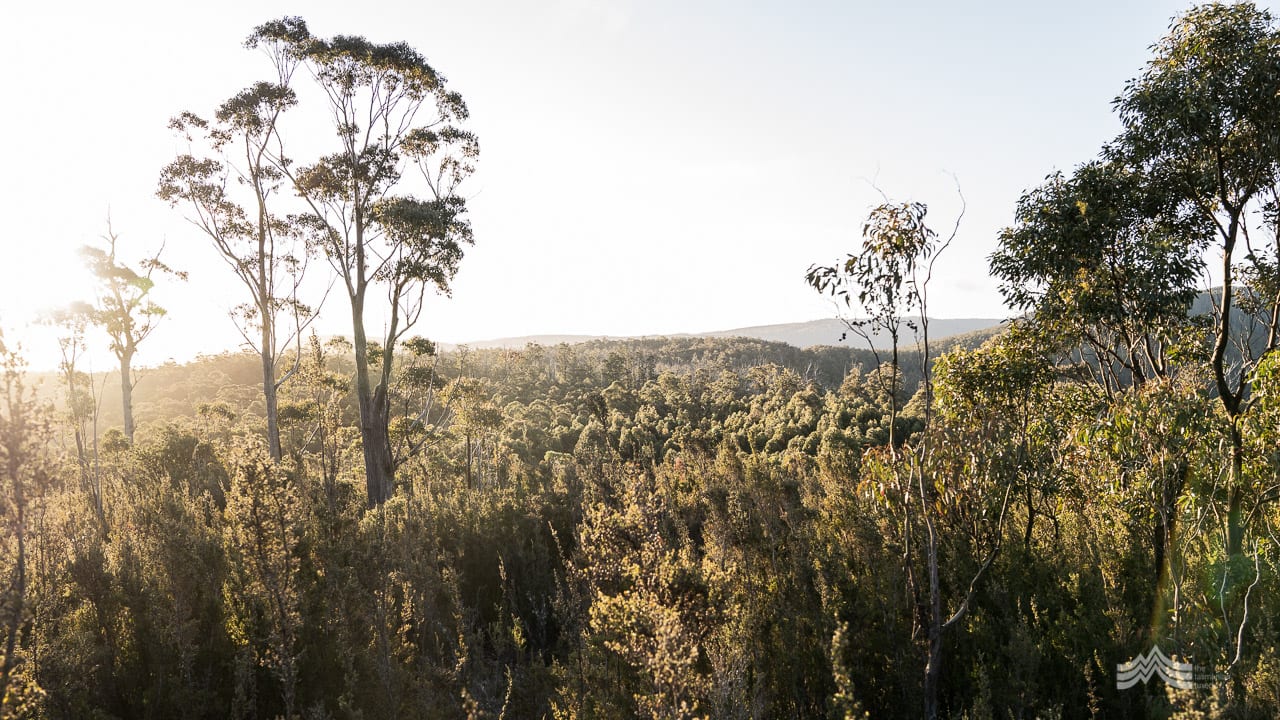
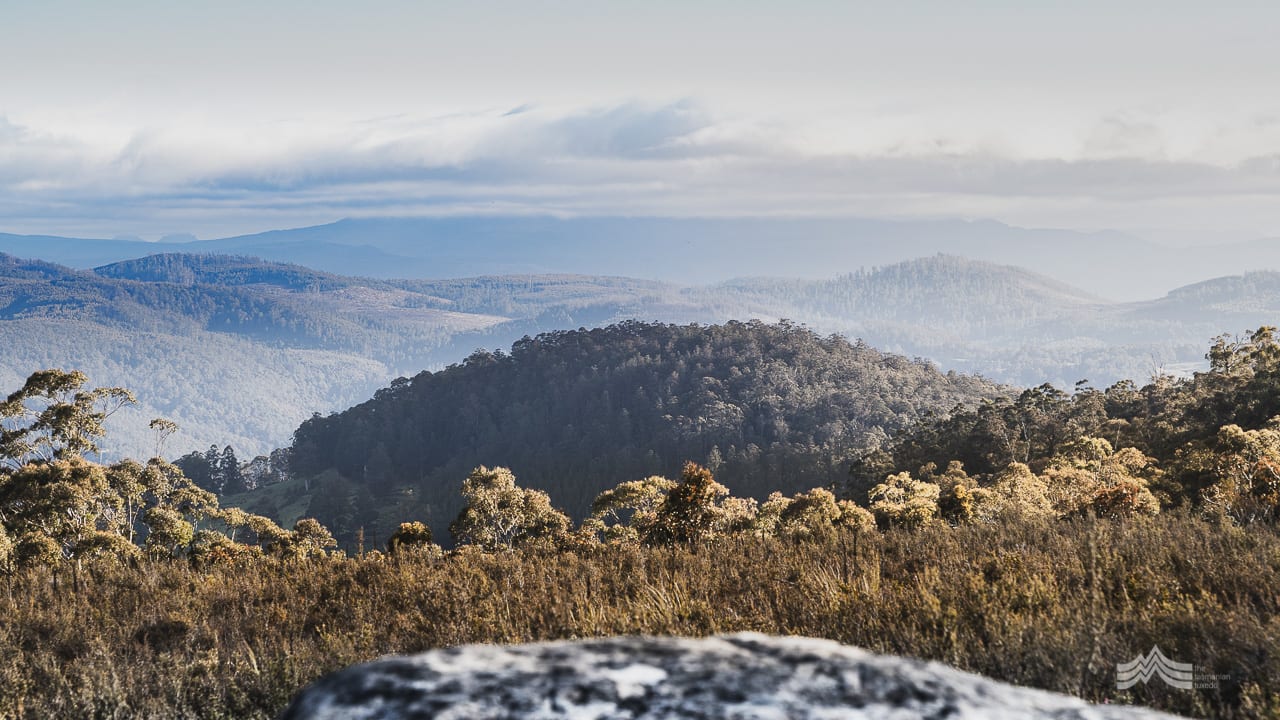
“We purchased a property on the other side of the mountain some 30 years ago,” begins the story. “It triggered many days of exploring and appreciating the natural beauty around us. Michael and I soon began investigating the land covenants system with a view to protecting the area for the future. Landowners may enter into a conservation covenant to manage defined areas for nature conservation and it means that any future owners of the property are obliged to do the same.”
“I still clearly remember a walk over the summit of the mountain back in 2002. We’d stopped on a rocky outcrop and sat enjoying the sound of the waterfall in the rainforest below whilst taking in views of that towering gum tree,” describes Paul, gazing at the majestic eucalypt before him. “It was one of those perfect moments. Just to top things off, an eagle appeared and landed in the tree. Looking back, it was almost as if it was trying to tell us something. We chatted about how good it would be to conserve more of this habitat as sadly we knew the current owners over on this side had plans to clear it.”

Continuing on their walk, and upon reaching the property’s front gate, they were surprised to discover a for sale sign erected on the boundary. “We rang the agent and immediately began to negotiate,” he grins. “As luck would have it, the property had been passed into the hands of liquidators and we were able to secure it for a bargain.”
Realising the conservation value of the land, the pair set about connecting with likeminded people and forming a trust. “We quickly identified a path forward and ended up building about 80% of the tourism village that you see here now within four and a half months. Essentially we wanted the place protected from loggers, for it to pay for itself, for people to be able to stay overnight and enjoy the walking trails, and for it to be a demonstration of sustainable living practices. Michael’s skills in hospitality perfectly complimented mine, and between us we had the experience required to bring Huon Bush Retreats to life.”
This secluded eco-tourism property is an intriguing mix of accommodation options. Guests can choose to enjoy a traditional campground experience, or glamp it up in one of two distinctive timber and canvas teepees. Each is nestled within its own private bush setting and complete with wood fire and private deck. Studio cabins and larger two bedroom family cabins are available for those who prefer to do things in a little more style. With a variety of configurations available, there is an option to suit all manner of groups.



“What we offer here is pretty versatile,” explains Paul. “We can accommodate families through to small conferences and group events. We’re really about providing likeminded people with a means to enjoy the reserve. If they share our love for nature, respect for the environment, and interest in sustainable living then they will have a great time and appreciate what’s here. We designed it so that people truly feel like they are away from it all…even when we are at our busiest, the layout here means you often don’t realise other people are on site.”
Fully off the grid, Huon Bush Retreats is one of very few businesses able to boast that it’s carbon positive. “Each cabin has a standalone solar system and that’s meant that every quarter for the past 18 years we haven’t had a power bill,” smiles Paul. “Carbon neutral wood heating, natural water collection, waste management and composting toilets are just some of the ways this place has a very low impact on the environment. We can operate as carbon positive because we grow and protect far more wood on site than we consume.”
Reflecting on life in this secluded mountainside, Paul says, “Quite often the first sound I hear of a morning is the gentle thump of a wallaby or the call of a lyrebird. I know I have an hour of peace in the morning taking that in while having a relaxed breakfast. It’s pretty hard to beat.”
Mount Misery Habitat Reserve now encompasses over 14 square kilometres of protected lands, including privately owned and covenanted titles and intervening public reserves. It is a diverse showcase of microhabitats from dry sclerophyll expanses and lush rainforest through to clifftop escarpments and open grasslands. Thanks to Paul and Michael, visitors are welcome to enjoy a varied network of walking trails and to breathe in the freshest of air that shrouds the surrounding Huon Valley. The mountain itself rises to 700m in elevation and is the dominant feature overlooking the townships of Lucaston, Huonville, Ranelagh and Judbury.
Whilst an explanation of its rather dismal name remains somewhat elusive, local suggestions reference the fact that the ‘miserable’ weather generally comes from the southwest and the mountain is adept at blocking its path. As the moist southwest airflow climbs the western slopes it often forms cloud atop the summit. Locals residing in Huonville are said to be provided with a half hour warning of approaching miserable weather.
Whilst Mount Misery is the focus of the reserve, there are a number of walks on site. “Ancient rainforest, towering gums, the waterfall and the labyrinth… they are all popular walks,” says Paul. “There are also over 30 interpretation panels throughout the reserve. We installed these, working closely with the Aboriginal community and we acknowledge this area as the country of the Melukerdee people. We hope through these stories and images that visitors will deepen their connection to Tasmania and their understanding of their place in the world.”
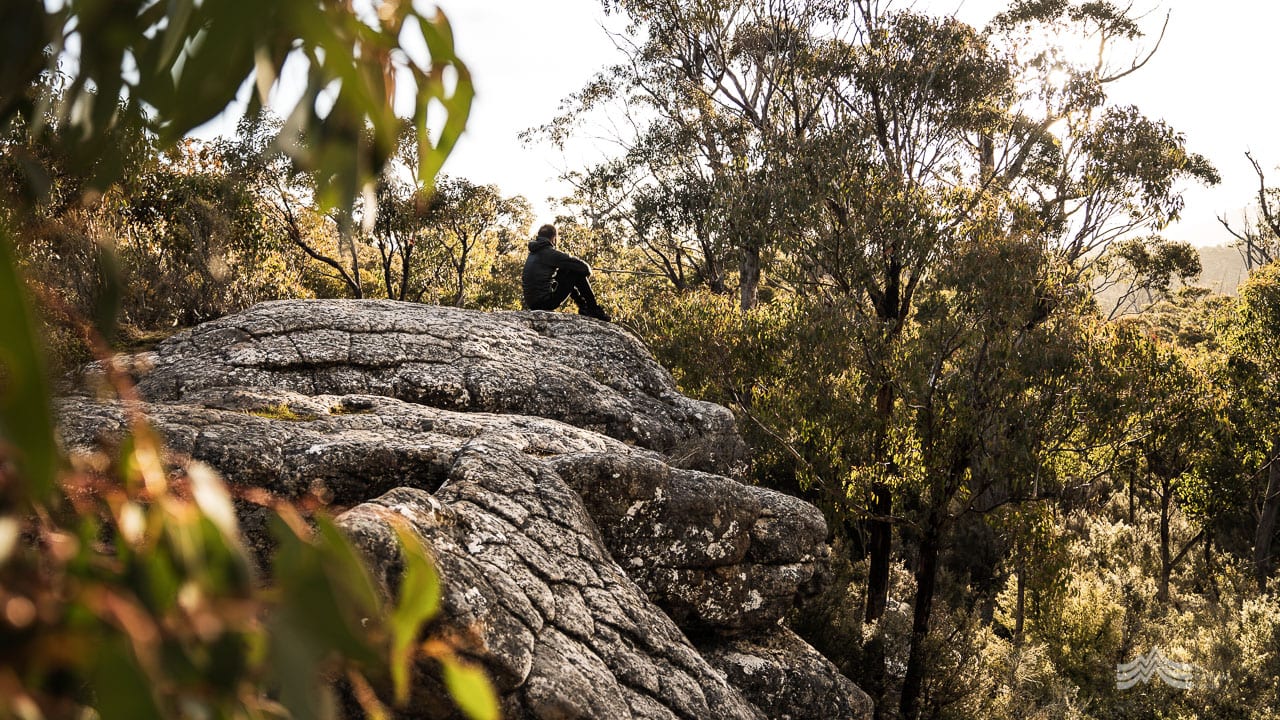


It’s a three to four hour round trip to the summit of the mountain itself. A zig-zag ascent up the escarpment leads to sub alpine heathland and spectacular views towards the south west wilderness. The trek across the plateau to the highest point lets you drink in views in the opposite direction towards Mount Wellington. There are plenty of rocky perches to rest on along the way – ideal for taking in all manner of bird calls. You think you’re alone, but if you’re observant it quickly becomes apparent that you’re not.
Back on site, Paul explains the stringent fire monitoring processes that are always in place, and how the local microclimate affords additional protection in a unique way. “The dominant fire danger heralds from the north west,” he explains. “And we are nestled under this escarpment which affords a comforting level of protection. Hot dry air that comes towards us from central Australia tends to pick up moisture from the Tasmanian rainforest. We often see the fire danger five points less here than it is elsewhere. Whilst our cooler, damp understory certainly eases things, our monitoring process is stringent and we are very alert to any potential threats.”
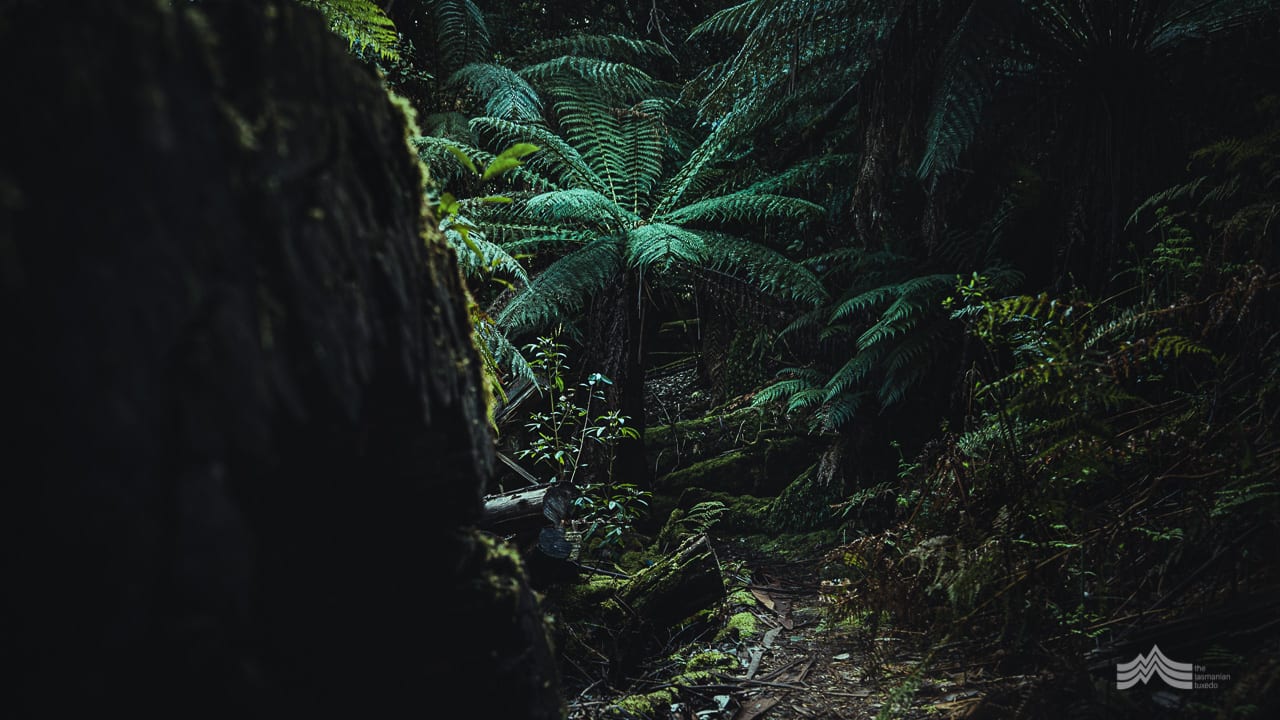

Whilst day visitors are warmly welcome at the reserve, it’s the overnight guests who truly see the place at its best. “Clear sightings of auroras are possible here,” says Paul. “We’ve even had a group fly in directly from Singapore, not even pausing for a stay in Sydney, just to come here to view the lights. They were here for four nights and were rewarded with amazing displays on three of those nights. They simply pulled the couches up to the deck and settled in for amazing night sky viewing.”
Tourists and locals alike always find delight in the wildlife at Huon Bush Retreats. “We periodically accept animals that have passed through the Bonorong Wildlife Sanctuary wildlife rescue system,” explains Paul. “Once they are ready to be released, we are able to offer a great home to many species. It’s particularly a good habitat for Rufus wallabies and you’ll see a number around who are quite tame.” Paul quietly points out an unobtrusive animal graveyard, celebrating those who came to share their time on site. “The headstones tend to represent each animal’s age, with the older ones signified by larger stones,” he explains.
For those keen to pack their bags and hop on down to the Huon Valley, Paul has a remarkable offer in store. “We’ve achieved our conservation outcomes, built an outstanding tourism product and won a few awards,” he reflects. “But now it’s time for us to go backpacking and hand this over to someone else. Eighteen years has been long enough and whilst I’ll be sad to leave, I am very happy to pass it on, safe in the knowledge that it’s protected for the future. We now have the place on the market and that’s ok as I know the conservation covenant will protect it. This lifestyle business is ripe for nature lovers who thrive on sharing experiences with others.”
It’s well worth the trip along the winding gravel road to serenity. Paul and Michael’s creation lives up to its name as a bush retreat and comes complete with the warmest of welcomes from its inhabitants. All manner of birds, mammals, reptiles and arthropods wander around at their leisure, sometimes sneaking into the cabins too. Not a place for arachnophobes – but certainly a hotspot for nature lovers.
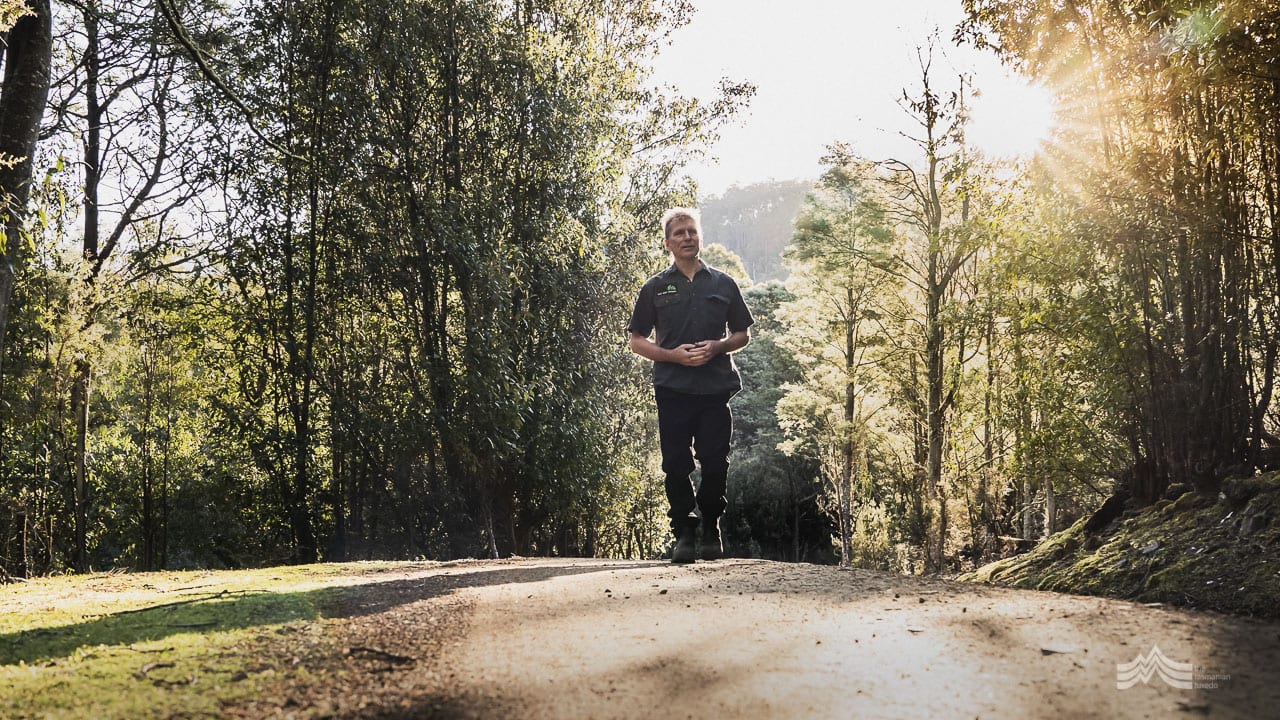


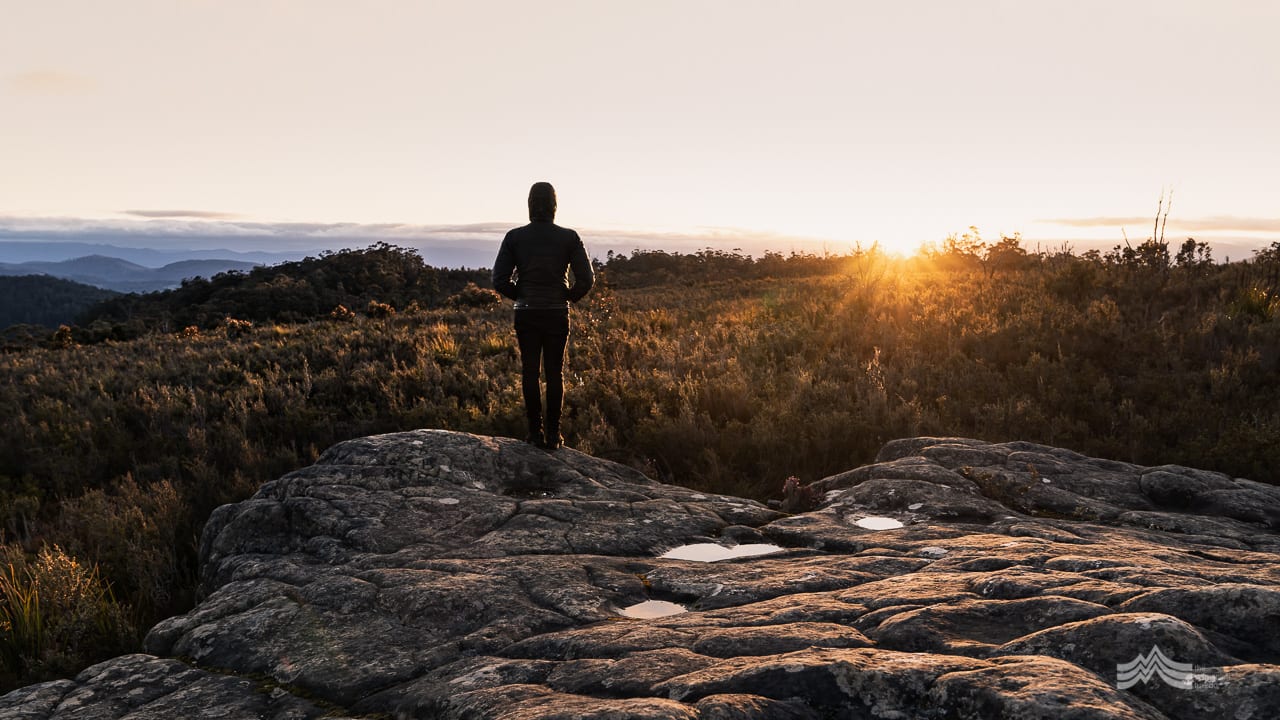
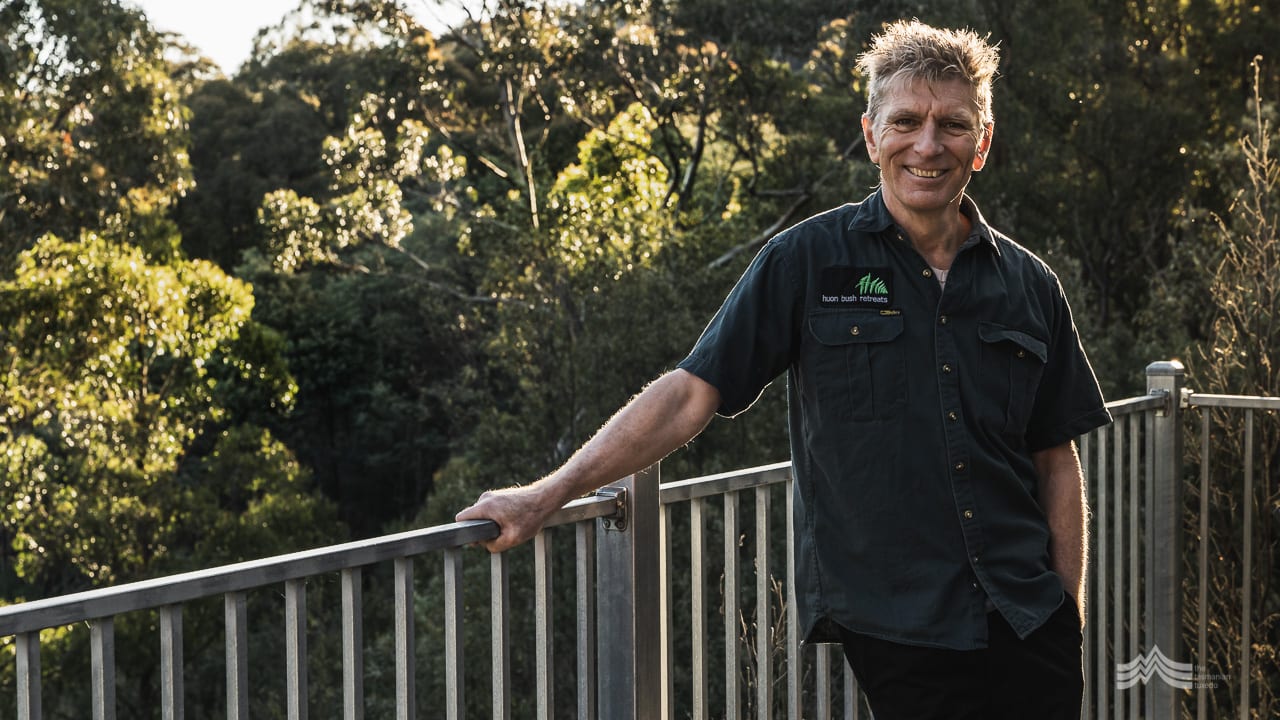
Further details are available via the Huon Bush Retreats website.
This article was a joint collaboration with the Huon Valley Council.
